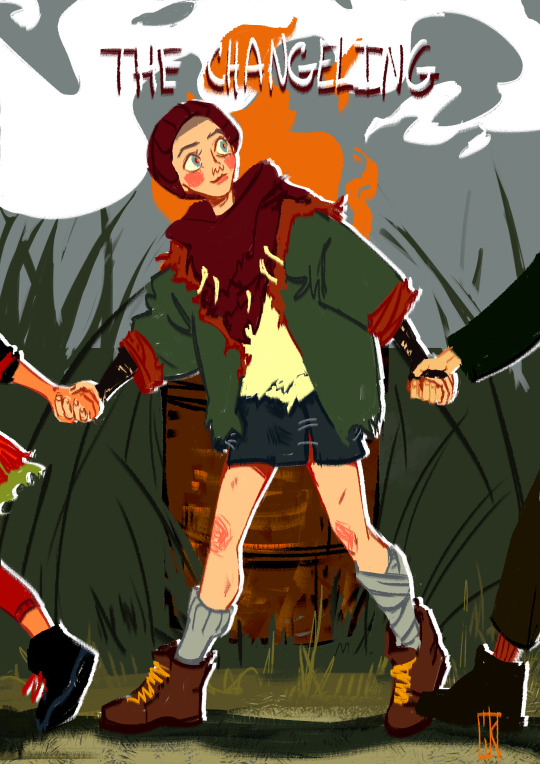in my embroidered tapestry crafted by my very own 2,000 hands
Don't wanna be here? Send us removal request.
Text
BREAKING NEWS
a bug has passed away peacefully in his sleep in my front lawn
11K notes
·
View notes
Text
help a black trans teen move out
hi 😳 i’m 18 & i’m living with an abusive m*ther increasingly off the shits. she’s been wanting me out since my birthday months ago and sometimes goes into yelling fits just because i’m still here, occasionally threatening physical violence or the destruction of my electronics. she says by late june she’s demanding i give her $1k (which, um… no thanks!) or find another place to live. so yeah, i would really like to skedaddle, preferably without her knowing because i so very much want to never interact with her ever again.
i’m located in NYC and would prefer to stay here for the time being since i’m still in the process of legally transitioning & getting an ID (i have to wait like at least 12 more weeks just to get my birth certificate updated so i’ll probably just bite the bullet and get an ID with my deadname on it until then 😑), and am planning on participating in SYEP this summer.
i have about $2k in savings ($3k if i receive the maximum stipend from SYEP) so i can help with rent for a bit if needed but i’m unemployed, i’ll need a new phone (possibly laptop as well?) once i leave, i occasionally need to buy myself food, and there are currently uncontrollable barriers to my ability to get a job. these barriers should hopefully be eliminated in a few months if all goes well. i am fully vaccinated as of may 27 2021.
please DM me or send me an ask if you have any leads or know somewhere i can stay (before anyone asks, youth shelters are not an option for me for personal reasons), as well as discussing any details/logistics. in the incredibly fortunate event that any of you can provide me temporary housing, i’ll need help getting a suitcase for some of my belongings (i’ll reimburse you on the spot if you need to buy a new one) on leaving day since again, i don’t want my mother to know about this.
please reblog this even if you can’t help in other ways. thank you.
315 notes
·
View notes
Photo










Pachyrhynchus Weevils, Southeast Asian Islands
Photos by Frank Canon on Flickr // Instagram
Photos shared with permission; do not remove credit or repost!
1. P. cabrasae 2. P. barsevskis 3. P. orbifer orbifer 4. P. moniliferus babuyanensis 5. P. congestus mirabilis 6. P. congestus pavonius 7. P. gloriosus modestior 8. P. pseudamabilis 9. P. gemmatus 10. P. occidentalis/absurdus?
10K notes
·
View notes
Text
shut UP abt tropes and start evaluating narratives on their own… does the story have merit? do the characters have meaning? if u care only abt whether certain tropes are carried out or not, and not abt whether a work is crafted carefully and well, u will end up consuming a lot of empty nothingness and eventually find yourself sorely disappointed by how little you have been moved.
4K notes
·
View notes
Text
I think the Evil Media Bias Against Platonic Relationships is one of those things tumblr loves to get worked up about despite, like. simply not being real.
82K notes
·
View notes
Text
theirs no naunce on here none of you are able to grasp “having personality disorders does not make you inherently evil” and “having a personality disorder does not excuse your poor behavior” at the same time, it’s like ur brain will combust if you even try to think both of those at once
558 notes
·
View notes
Text
wish i was some kind of creature with a long tail that i could idly twitch when im bored or interested in something i think i could really benefit from that
3K notes
·
View notes
Text
can i just say that this growing trend of posts that compile quotes/artwork that are related in topic matter, is so so glorious. i love the mismatched font styles of the screenshots, i love how art in general, over various mediums, gravitates towards certain themes and i don’t know how to word this but i love seeing the impact of the personality/style of different artists on those themes… like having light shone on something and depending on ur position it looks different, is similar to the way different artists/writers/etc’s work hits u slightly differently even when talking about the same thing… does that make sense idk but like it’s a clear representation of how there’ll never be ‘enough’ art or ‘too much’ art and that’s so. wonderful i think
22K notes
·
View notes
Text
i wish ao3 got sued as often as people think they do
797 notes
·
View notes
Text
yall ever just meet someone livin an entirely different dnd alignment column away from u and give them a momentary Look
13K notes
·
View notes
Text
people who donate to ao3 are not seeing heaven btw
13K notes
·
View notes
Text
being able to talk about killing people without risk of getting suspended definitely gives tumblr an edge over twitter
33K notes
·
View notes
Photo



A bunch of patho fan art I never posted here for some reason??
6K notes
·
View notes
Text
what if we ignored every brand online what if we all unfollowed every brand and none of them had more than 3k followers and we never talked about a single brand by name no Matter what they tweet or do
20K notes
·
View notes
Text
Why can’t the British Museum repatriate anything?
Something I see a lot in museum discourse in public spaces is people wondering why museums don’t just do repatriation/decolonization. The argument is that if museums had an interest in restorative justice, they’d initiate these procedures on their own, and they’d do so immediately. Failure to initiate indicates disregard for marginalized and exploited societies and reinforces colonial power structures, which makes museums nothing more than a tool for capitalist/colonial entities.
And… this isn’t exactly wrong! But it’s not a particularly well-informed take because it assumes that museums exist independently of other governing bodies (and a lot of other stuff but we’re going to focus on that right now). Museums do not exist independently of other governing bodies. Tonight, we’re going to talk about everybody’s least-favorite marble-stealing museum, the British Museum, and how it’s not just museum policy keeping its holdings there.
The British Museum is famous for a lot of things, including:
-stealing the Parthenon marbles
-stealing the Rosetta stone
-stealing a ton of artifacts from what is now Nigeria thanks to the Punitive Expedition of 1897
and many other things! But here is something important to remember about the British Museum: They did not commission these thefts! Rather, they are an entity essentially formed to house military spoils. (Well, sort of- in its earliest incarnation in the 1750s it was mostly Hans Sloane’s cool natural history stuff. It was really post-1800 where the military campaigns started looting things, but the point remains that the primary sources of artifacts were a.) military expansion and b.) colonial resource extraction.) The museum itself didn’t steal the stuff. Primarily, they just received the stolen goods. And that’s actually an important distinction to make! It doesn’t release them of any culpability, mind you. What it does do is give you some context for why they behave the way they do as an educational entity and as a political organization.
Another thing that will help explain what is going on in Britain is a piece of legislature called the British Museum Act of 1963 (which I’ll be calling the BMA 63 from here on out). (Also, that link is to the full text of the act. I won’t be reproducing the whole thing here, but it’s worth looking at to understand the depth of control the British government has over the British Museum.)
BMA 63 is an update to the original legislature of BMA 1753, which is the act that brought the museum into being. There have been updates between then and now, but BMA 63 made some massive changes to the way the collection is managed. One thing it did was to split the museum into Natural History and the British Museum. Another thing was it wrote the provisions for collection divestment into law in Section 5 of the act:
5 Disposal of objects (1) The Trustees of the British Museum may sell, exchange, give away or otherwise dispose of any object vested in them and comprised in their collection if - (a) the object is duplicate of another object, or (b) the object appears to the Trustees to have been made not earlier than the year 1850, and substantially consists of printed matter of which a copy made by photography or a process akin to photography is held by the Trustees, or © in the opinion of the Trustees the object is unfit to be retained in the collections of the Museum and can be disposed of without detriment to the interests of students. Provided that where an object has become vested in the Trustees by virtue of a gift or bequest the powers conferred by this subsection shall not be exercisable as respects that object in a manner inconsistent with any condition attached to the gift or bequest.
In plain English, that means that an object can ONLY leave the British Museum’s collection if it’s a copy of something, if it’s paper material written after 1850, or if the object is damaged substantially enough that it can’t be studied. The British government has intentionally made repatriation impossible. And notice that says in the opinion of the trustees. NOT the curators, but rather this board of 25 people who are appointed by the British government to further British interests. Does this deck seem a little stacked to you?
So let’s say that the British Museum wanted to give the Parthenon Marbles back.
Simply put… they couldn’t. They legally could not. There is no way for them to divest their collection thanks to the provisions of BMA 63. The stuff in the British Museum… isn’t really owned by the British Museum. The Board of Trustees owns and controls everything in the museum. The linked comments from their current chair are indicative of their attitude- they see their role primarily as a way to keep the entire collection in Britain on a permanent basis. The curators, the museum staff? They honestly don’t have control over what’s going on with the stuff in the collection. They’re allowed to set up loans, but they cannot transfer ownership of anything away from the museum. This is not an accident. This was a way to reinforce a certain type of colonial power and to ensure that war trophies remained where they were: in London. This law was upheld in court as recently as 2005, when the high court ruled that no, actually, the British Museum was not allowed to return art stolen by the Nazis. DESPITE the fact that the museum WANTED to give the looted art to the family from whom it was stolen, they were barred from doing so by the British government. This is not an accident. The court ruled that “the British Museum Act - which protects the collections for posterity - cannot be overridden by a “moral obligation” to return works known to have been plundered.” Or in other words, the court knew that it was the right thing to do to return the work, but because the law is the way it is, they couldn’t do the right thing. The museum tried for years to give the pieces back but they were stopped from doing so. This is one major way that the government of the UK furthers their own national interests. By insisting that the looted artifacts don’t belong to an educational institution but instead to a primarily government-appointed board of trustees who benefit from the prestige and aren’t beholden to public consequences, the British government has essentially incorporated the British Museum as a colonial treasure-house and they’re not even trying to hide it. This means that while Berlin’s Ethnological Museum can just straight-up give the Benin Bronzes back, the British Museum cannot.
Again, this does NOT mean the museum itself is innocent! It does not mean that they’re heroes who would loooove to give stuff back but they’re being thwarted by the evil government! This whole scenario here is just an illustration of some of the complexities behind museum policies. Hopefully what I’ve done here is shown you that museums are political entities. The people who make the decisions aren’t always the people you think they are. When you are thinking about looted artifacts, you have to look up the chain. Museums have a lot of power as institutions, but when they’re backed by a national government, they lose a lot of their autonomy towards more equitable ideals. Just saying that the British Museum is racist/colonialist/capitalist isn’t enough- we need to look at it as what it is. A tool of the UK government to further the narrative they want to tell.
And this is important because in the US and in online spaces, museum discourse is really bad at understanding the logistics of repatriation. Which is completely understandable, because there are a lot of moving parts when it comes to safely and equitably restoring cultural sovereignty! But at the same time it’s also frustrating because there’s a lot of demand to just give stuff back. What I hope people realize after reading this little essay is that when you’re calling for repatriation, the situation might be legally messier than you think. That doesn’t mean you should give up, and it doesn’t mean you’re wrong- it just means that you need to strategize and think carefully about how you go about it.
(PS: Sources are linked in the text. I highly recommend reading them!)
7K notes
·
View notes
Photo


@ratutopia’s oc locust (2019 vs. 2021)
12 notes
·
View notes
